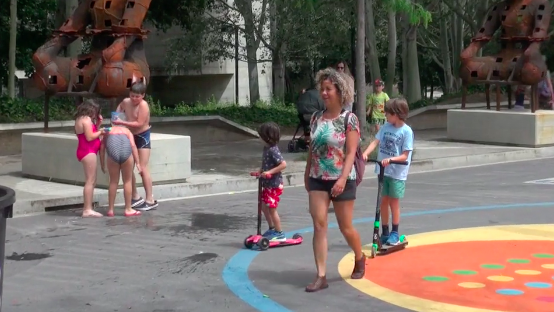Over two years ago, Barcelona set the transportation world aflutter when it announced it would be attempting to reinvent parts of its city by developing a Superblock system by transforming targeted street grids to prioritize people over cars. On selected small street networks large parts of intersections and roadways would be taken back for parks and community gathering. Vehicles would not be banned, but it would redesign the grids so that fast thru-traffic was discouraged thru a series of driving direction changes, street narrowing and speed limits. Thus, almost all vehicles present would be either local residents or people with personal business on those streets.
Barcelona's Superblocks: Change the Grid, Change your Neighborhood from STREETFILMS on Vimeo.
A Superblock encourages more residents to safely use the streets. Children to play and explore. Seniors and those with limited mobility a place to relax and be social. Bicyclists to feel safer and young kids to grow more confident riding. They also provide more greenery and healthy air while dramtically reducing noise levels and pollution.
I was fortunate to visit in June, when some of the initial tactical urbanism style interventions were being made more permanent in Poblenou, a 3 x 3 street grid in a section of the city where there is a lot of public housing. The streets were calmer and you could hear things you usually can't in the center of a city. And it ebbed and flowed whether it was lunch hour or weekends with families and children. Being in the Superblock gives one a unique sense of happiness.
Much of the initial wave of reporting inferred that the city had installed many Superblocks. But that wasn't the case. In fact, Poblenou was the only one until a second Superblock officially opened in Sant Antoni just days before my arrival. It has entirely different story as the city had already allocated funding to redesign the market there when they approached residents about making the space car-light. It did not utilize any tactical urbanism techniques and went directly to a finished construction.
From my conversations with people with the city of Barcelona, it would seem there are now roughly a dozen new Superblock areas deep in the planning stages or starting implementation/discussion. It will be exciting to see this experiment in urbanism continue to transform their city and the lessons the rest of the world can learn.







